#sustainable urban environment
Text
Note: Reasons to Be Cheerful has had weirdly huge formatting issues for the past six or so months, so if that version is a mess, this link should work better.
"Florida Power & Light Company (FPL), the Sunshine State’s largest power utility, employs all the people you might expect: electricians, lineworkers, mechanical engineers — and a few you might not. For over 40 years, the company has kept a team of wildlife biologists on staff. Their task? Monitoring the giant carnivorous reptiles that reside in one of the state’s nuclear power plants.
Saving the American Crocodile
What sounds like a low-budget creature feature is actually a wildly successful conservation story. It goes like this: In 1975, the shy and reclusive American crocodile was facing extinction. Over-hunting and habitat decline caused by encroaching development had pushed its numbers to a record low. By 1975, when it was listed as endangered under the Endangered Species Act, there were only 200 to 300 left.
Three years later, in 1978, workers at the Turkey Point nuclear power plant in Homestead, Florida happened upon something that must have made them gasp: a crocodile nest along one of the plant’s 5,900-acre “cooling canals.” Rather than drive the crocs away — perhaps the easiest solution — FPL hired a team of biologists and implemented a Crocodile Management Plan. Its goal was unconventional: provide a suitable habitat for the crocs within the workings of the nuclear power plant, allowing both to coexist.
Over the course of the next 30 years, FPL’s wildlife biologists monitored nests, tagged hatchlings and generally created a hospitable environment for the reptiles. As it turned out, the plant’s cooling canals provided an ideal habitat: drained earth that never floods on which to lay eggs directly adjacent to water. Over the years, more and more crocs made the cooling canals home. By 1985, the nests at Turkey Point were responsible for 10 percent of American crocodile hatchlings in South Florida. In 2007, the U.S. Fish and Wildlife Service downgraded the American crocodile’s status from endangered to threatened, singling out FPL for its efforts.
The program continues to this day. To date, biologists have tagged some 7,000 babies born at the plant. In 2021, there were a record-setting 565 crocodile hatchlings at the Turkey Point facility.
"Reconciliation Ecology"
Turkey Point’s efforts are an example of what is known in the conservation world as “reconciliation ecology.” Rather than create separate areas where nature or animals can thrive in isolation from humans, reconciliation ecology suggests that we can blend the rich natural world with the world of human activity. Michael Rosenzweig, an emeritus professor of ecology and evolutionary biology at the University of Arizona, was a leading force in establishing this concept. The author of Win-Win Ecology: How the Earth’s Species can Survive in the Midst of Human Enterprise, Rosenzweig has pointed out that although human encroachment has typically been considered a threat to biodiversity, the notion that the world must be either “holy” or “profane,” ecologically speaking, is simply not true.
“In addition to its primary value as a conservation tool, reconciliation ecology offers a valuable social byproduct,” writes Rosenzweig in his first chapter. “It promises to reduce the endless bickering and legal wrangling that characterize environmental issues today.”
-via Reasons to Be Cheerful, May 5, 2022. Article continues below. All headings added by me for added readability.
Dr. Madhusudan Katti, an associate professor in the Department of Forestry and Environmental Resources at North Carolina State University, was inspired by Rosenzweig when he did his postdoc at Arizona State. Katti has now been in the field of reconciliation ecology for two decades and teaches classes on the subject. “To me it’s finding solutions to reconciling human development with biodiversity conservation,” Katti says.
This common ground between development and conservation can be consciously planned, like FPL managing a crocodile habitat at a nuclear power plant or the state-sponsored vertical gardens and commercial farms on high-rise buildings in Singapore. Other examples include the restoration of the coral reef around an undersea restaurant in Eilat, Israel, or recent legislation in New York City requiring patterned glass on high-rise buildings, making windows more visible to migratory birds. Other planned examples of reconciliation ecology can be more individually scaled: a rooftop garden in an urban setting, modifying your garden to earn a “backyard bird habitat” certification from the Audubon Society, or even just mowing your lawn less often...
Reconciliation Ecology: Nature's Already Doing It Without Us
But there are countless examples of “accidental” incidents of reconciliation ecology, as well. One of Katti’s favorites is the kit fox of California’s San Joaquin Valley. “The kit fox was one of the very first species listed on the Endangered Species Act,” Katti says. Its decline was caused by habitat loss through agricultural and industrial development, as well as the extermination of the gray wolf population, which led to an increase in coyotes. So kit foxes adapted and moved to new habitats. One of these was the city of Bakersfield, California.
“Bakersfield, surrounded by oil pumps, would be the last place you’d expect to find an endangered species,” Katti says. But researchers think kit foxes have migrated to Bakersfield because they actually have more protection there from predators like coyotes and bobcats. “The kit foxes have figured out that if they can tolerate the human disturbance and live with people, then they are safer from all these other predators,” he says.
Living in the city has led to some interesting behavioral changes. In the wild, for instance, a female kit fox gives birth to her young and raises them by herself in a den. But in the city, researchers have observed multiple females raising their litters together in the same den. “It’s like a form of cooperative breeding,” Katti says. “That wouldn’t happen in the wild.” ...
The Big Picture: How We Think about Conservation
Reconciliation Ecology isn’t just we humans welcoming animals like crocodiles and foxes into our environments, though. It’s also living with nature in a way that most Western societies haven’t done since the Enlightenment. “In recent years, there’s been a recognition that the ‘fortress conservation’ model — keeping nature separated from humans and not thinking of or valuing human-inhabited landscapes — those ideas are outdated,” says Katti.
In fact, in Katti’s classes on reconciliation ecology, he embraces the notion of reconnecting people with their land if they have been unjustly separated from it. “The term reconciliation also applies to all the colonial legacies where both nature and people have been harmed,” Katti says. “For Indigenous communities, the harm done to ecosystems, it’s happened together. So you can talk about addressing both. That’s where a lot of my thinking is at the moment.”
A hopeful version of this sort of reconciliation is happening in California where colleagues of Katti’s who are tribal members are re-introducing “tribal burns” in some areas. Controlled burns have been a part of many Indigenous cultures for millenia, both as a way to prevent devastating forest fires, but also to encourage the growth of certain plants like hazel that are used for basket-weaving and other crafts.
“The notion that people don’t belong there and ‘let nature take care of itself’ doesn’t really work,” Katti says. “That’s the legacy of Western European Enlightenment thinking — a divide between human and nature. That is a real faulty view of nature. People have been part of the ecosystem forever.”
-via Reasons to Be Cheerful, May 5, 2022
#a bit older but still ongoing/relevant and still very cool#florida#crocodile#reptile#ecology#environment#sustainability#endangered species#united states#california#kit fox#nuclear power plant#reconciliation#colonialism#the enlightenment#conservation#human beings#good news#hope#urban ecology
2K notes
·
View notes
Text
To build all of the solar panels, wind turbines, electric vehicle batteries, and other technologies necessary to fight climate change, we’re going to need a lot more metals. Mining those metals from the Earth creates damage and pollution that threaten ecosystems and communities. But there’s another potential source of the copper, nickel, aluminum, and rare-earth minerals needed to stabilize the climate: the mountain of electronic waste humanity discards each year.
Exactly how much of each clean energy metal is there in the laptops, printers, and smart fridges the world discards? Until recently, no one really knew. Data on more obscure metals like neodymium and palladium, which play small but critical roles in established and emerging green energy technologies, has been especially hard to come by.
Now, the United Nations has taken a first step toward filling in these data gaps with the latest installment of its periodic report on e-waste around the world. Released last month, the new Global E-Waste Monitor shows the staggering scale of the e-waste crisis, which reached a new record in 2022 when the world threw out 62 million metric tons of electronics. And for the first time, the report includes a detailed breakdown of the metals present in our electronic garbage, and how often they are being recycled.
“There is very little reporting on the recovery of metals [from e-waste] globally,” lead report author Kees Baldé told Grist. “We felt it was our duty to get more facts on the table.”
#solarpunk#solar punk#reculture#e-waste#renewable energy#solar power#solar panels#critical metals#rare earths#urban mining#metals recovery#consumer electronics#environment#sustainability#circular
33 notes
·
View notes
Text
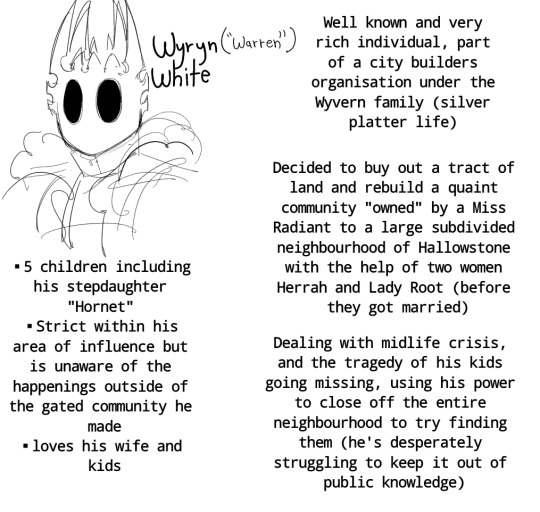
I cannot go into full depth on the inner workings of this neighbourhood but just know that Wyryn is freaking tf out
#tfw you build the perfect self sustained environment for your children to flourish and succeed n they run from home#city builders as a vauge way of saying they are very crucial to the development of urbanization in the vaaauge city#his family has a thinly veiled monopoly as theres not many other individuals who can worm their way into power like them#neighbourhood au
45 notes
·
View notes
Text

film shot on the LA river 🌊
We just finished filming a video and hosting an event with LA's Urban Ecologist, Kat Superfisky. Full video is on my YouTube :)
We brought out over 60 people for an Urban Ecology hike on the LA River. People of all ages and from all around showed up to learn more about our local landscapes. Hoping to do it again soon!
#queerbrownvegan#los angeles#ecology#urban ecology#sustainability#environmentalism#environment#social justice
9 notes
·
View notes
Text
How to turn your Neighborhood into a Village
youtube
Americans have been deprived of our human, village-dwelling nature - but the good news is - we aren't powerless - we can make a change. Turn your neighborhood into a village.
#sustainability#sustainable#community building#environment#environmentalism#cottagepunk#Youtube#garden#gardening#urban gardening
20 notes
·
View notes
Text
Great Idea 22: Sustainable urbanism
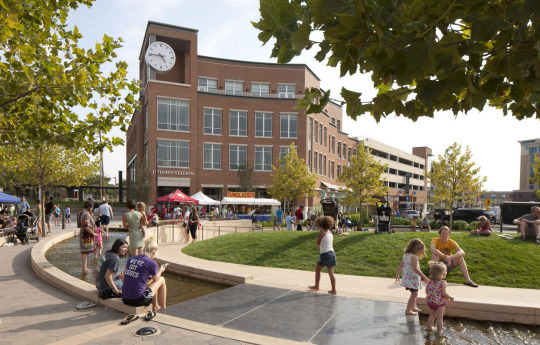
The trend toward complete communities shapes the debate on sustainability and environmentalism, and vice-versa. Read more.
#great ideas#new urbanism#urban design#urbanism#cities#walkability#communities#environment#sustainability#sustainable design#sustainable development
9 notes
·
View notes
Text
The Magic of Street-Side Trees. Beauty, Coolness, and Urban Prosperity.

The beauty, coolness, and urban prosperity brought by street-side trees.
Trees lining urban streets are integral elements of the urban landscape, serving multiple ecological roles and socio-economic functions. In general, incorporating trees along the roads in urban areas can elevate the aesthetic appeal, regulate temperatures, and foster prosperity growth. And if our goal is to enhance the role of cities in driving economic growth and fully utilizing human resources, then we must prioritize making tangible improvements to urban environments.

Trees are crucial components for creating appealing and hospitable urban environments that enhance citizens' psychological and social well-being. They play a vital role in reducing air temperature and humidity, which helps alleviate the effects of heat waves and global warming. Trees bear witness to the history, culture, and identity of cities, which they preserve and pass on to future generations. In addition to their undeniable beauty, trees are valuable allies in the fight against climate change.
They provide a range of local benefits that are often ignored beyond the global role of absorbing carbon dioxide. This article aims to increase awareness among readers about the importance of trees for cities and the planet. It seeks to motivate all of us to value, preserve, and protect the urban tree heritage through a participatory and accountable manner that involves citizens and institutions.

Street-side trees are more than just beautiful to look at. They are an essential resource for cities, providing numerous benefits to residents' health, well-being, and quality of life. In their article on Monocolo, Paolo Massi and Giulia Papaleo highlight the main advantages of trees in urban areas. La magia degli alberi lungo le strade. Bellezza, frescura e prosperità urbana
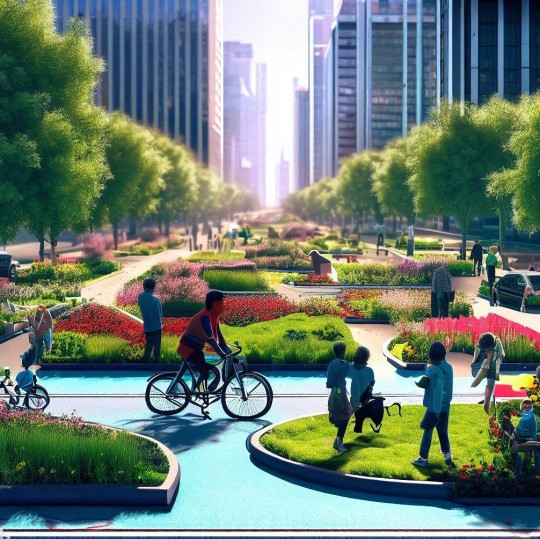
Among the benefits that trees bring to the urban environment, we can mention:
Trees perform ecological, social, and economic functions that contribute to the well-being and development of cities. They help to reduce air pollution by capturing particles, filtering harmful gases, and producing oxygen. Trees also absorb carbon from the atmosphere and store it in their wood, making them beneficial for climate change mitigation. Additionally, trees create shade, cool the air, and reduce energy consumption for cooling buildings. They prevent flooding, improve water quality, and increase biodiversity by providing shelter and food for many species. Trees enhance the urban landscape, mitigate noise, and even increase the value of properties.

Moreover, they promote physical and mental health by stimulating physical activity, reducing stress, and improving mood and concentration.
Therefore, roadside trees are a valuable resource for cities and their inhabitants. It is critical to protect, care for, and increase them through various means, such as public policies, private actions, and guaranteed maintenance over time, recognizing their fundamental role in the quality of urban life so that maintenance, which develops jobs, in particular, is 'guaranteed' over time,

Urban forestation and eco-neighborhoods.
Urban forestation refers to designing and creating green spaces in urban and peri-urban areas to incorporate nature into the landscape. It is important to both develop new green spaces and enhance existing ones.
Eco-neighborhoods serve as an example of sustainable and livable urban environments. They are designed considering the environment and the health of their residents. Sustainability principles are followed to improve the landscape and economic assets of the urban context. The design of an environmentally sustainable neighborhood aims to reduce its environmental impact during construction, throughout its life cycle, and even during decommissioning while prioritizing the comfort of its residents. These neighborhoods are built to improve people's quality of life by emphasizing energy conservation, renewable energy, environmentally friendly materials, reducing water and waste consumption, and promoting sustainable mobility. They are tangible parts of the city that contribute to the well-being of its inhabitants.
In addition, urban forestation is another example of how urban environments can be made more livable and sustainable. We can seamlessly blend nature into the urban landscape by integrating street trees, gardens, and parks. They represent elements of nature that help purify the air we breathe, capturing pollutants, storing carbon, and mitigating the climate of cities.
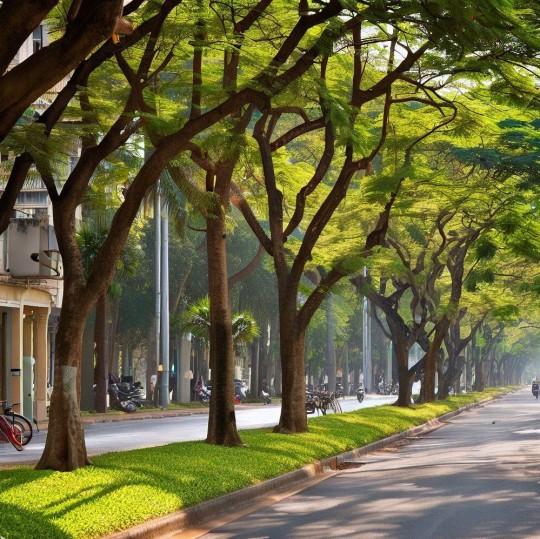
In summary, street-side trees are not just a decorative element but a proper green infrastructure that improves the quality of urban life. Therefore, It is vital to encourage planting, caring for, and preserving trees in urban areas, with the participation of government institutions, businesses, and residents, in order to achieve a shared vision to promote sustainable progress.
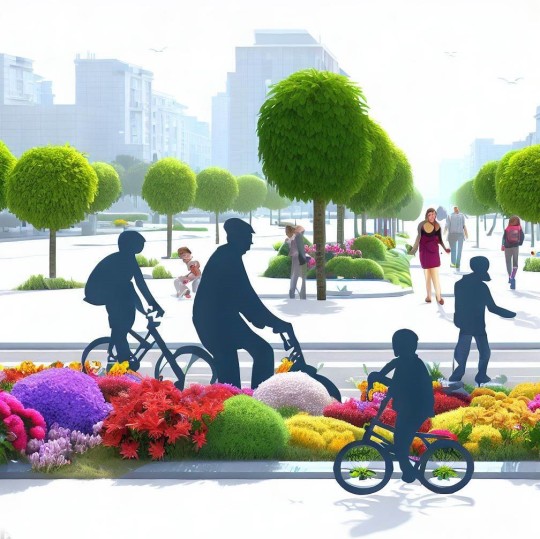
🟠 Italiano
Intro
Gli alberi sono elementi essenziali per creare paesaggi urbani attraenti e accoglienti, che favoriscono il benessere psicologico e sociale dei cittadini. contribuiscono a ridurre la temperatura e l'umidità dell'aria, mitigando gli effetti delle ondate di calore e del riscaldamento globale. Essi sono testimoni della storia, della cultura e dell'identità delle città, che conservano e trasmettono alle generazioni future. Alleati nella lotta ai cambiamenti climatici, oltre alla loro innegabile bellezza offrono una serie di benefici locali che spesso tendiamo a trascurare (al di là dei benefici globali di assorbimento dell’anidride carbonica). Questo articolo quindi ha lo scopo di sensibilizzare i lettori sull'importanza degli alberi per le città e per il pianeta, invitandoli a conoscere, apprezzare e tutelare il patrimonio arboreo urbano coinvolgendo i cittadini e le istituzioni in un processo partecipativo e responsabile.
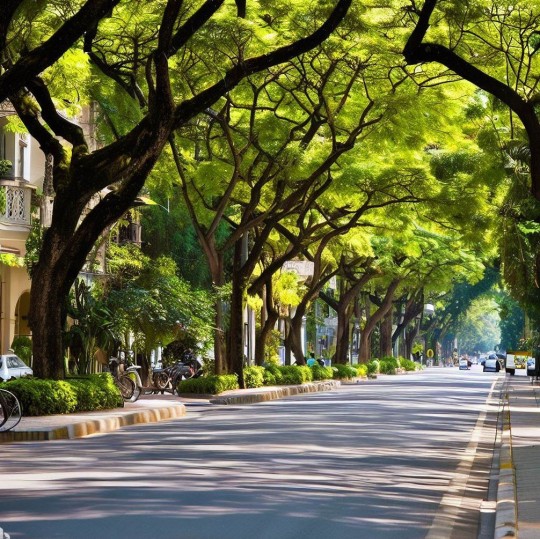
La magia degli alberi lungo le strade. Bellezza, frescura e prosperità urbana.
Gli alberi sono una risorsa preziosa per le città, non solo per il loro contributo alla mitigazione dei cambiamenti climatici, ma anche per i molteplici benefici che apportano alla salute, al benessere e alla qualità della vita dei cittadini. In questo articolo del Monocolo gli autori Paolo Massi e Giulia Papaleo, vogliono illustrare alcuni dei principali vantaggi che gli alberi offrono alle aree urbane e alle persone che le abitano. La magia degli alberi lungo le strade. Bellezza, frescura e prosperità urbana

La magia degli alberi lungo le strade dunque non si limita alla loro estetica. Gli alberi sono elementi essenziali per il benessere e lo sviluppo delle città, in quanto svolgono funzioni ecologiche, sociali ed economiche. Tra i vantaggi che gli alberi apportano all'ambiente urbano, possiamo citare:
Riduzione dell'inquinamento atmosferico: gli alberi catturano le particelle sospese nell'aria, filtrano i gas nocivi e producono ossigeno.
Mitigazione del cambiamento climatico: gli alberi assorbono il carbonio dall'atmosfera e lo immagazzinano nel loro legno, contribuendo a ridurre l'effetto serra.
Regolazione termica: gli alberi creano ombra e rinfrescano l'aria attraverso la traspirazione, diminuendo la temperatura e il consumo energetico per il raffreddamento degli edifici.
Conservazione del suolo e dell'acqua: gli alberi riducono l'erosione del suolo, aumentano la sua capacità di infiltrazione e ritardano il deflusso delle acque piovane, prevenendo le inondazioni e migliorando la qualità dell'acqua.
Incremento della biodiversità: gli alberi offrono rifugio e cibo a molte specie animali e vegetali, arricchendo la diversità biologica delle città.
Valorizzazione del paesaggio urbano: gli alberi creano scenari naturali, armonizzano l'architettura, attenuano il rumore e aumentano il valore immobiliare delle proprietà.
Promozione della salute e del benessere umano: gli alberi favoriscono la salute fisica e mentale delle persone, stimolando l'attività fisica, riducendo lo stress, migliorando l'umore e la concentrazione.
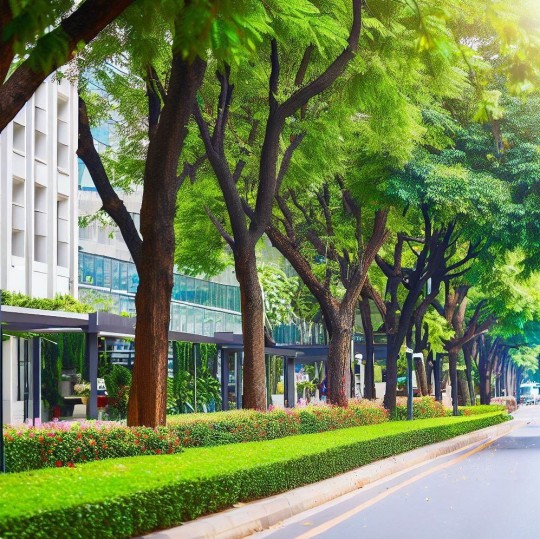
Gli alberi e le aiuole a verde lungo le strade sono quindi una risorsa preziosa per le città e i loro abitanti. Per questo motivo, è importante proteggerli, curarli e incrementarli, attraverso politiche pubbliche e azioni private che ne riconoscano il ruolo fondamentale per la qualità della vita urbana affinché la manutenzione, che sviluppa posti di lavoro, in particolare venga 'garantita' nel tempo.
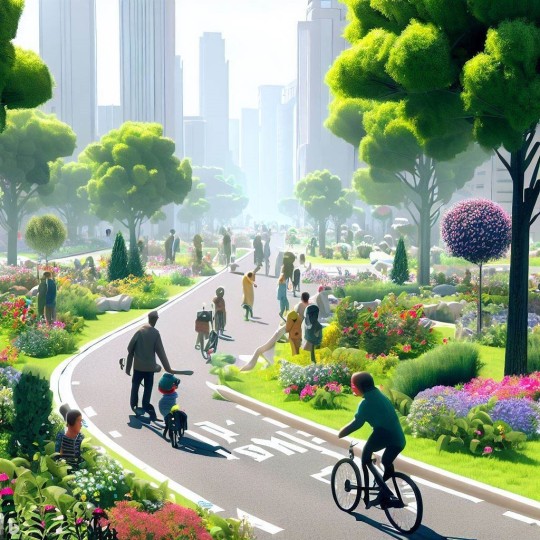
La forestazione urbana e gli ecoquartieri
Con il termine forestazione urbana si intende la progettazione e lo sviluppo di aree verdi urbane e periurbane, facendo della natura un'importante protagonista di questo paesaggio. Chiaramente è importante non solo progettare e sviluppare nuove aree verdi, ma anche rivalorizzare e riappropriarsi di quelle esistenti.
Certo! Gli ecoquartieri sono un esempio di ambienti urbani sostenibili e vivibili. Sono quartieri costruiti nel rispetto dell’equilibrio ambientale e della salute delle persone che vi abitano. Sono conformi ai principi della sostenibilità e puntano alla valorizzazione del patrimonio paesaggistico ed economico del contesto urbano in cui sono inseriti. La progettazione di un quartiere ecosostenibile punta a ridurne l’impatto ambientale: dalla fase di costruzione, al ciclo di vita, fino alla sua dismissione, senza mai dimenticare il comfort di chi lo vive. Si tratta di vere e proprie porzioni di città edificate con l’obiettivo di innalzare il livello di qualità della vita e sono realizzate ponendo l’accento su: risparmio energetico; uso delle energie rinnovabili e di materiale ecologico; riduzione del consumo di acqua e di rifiuti; promozione della mobilità sostenibile.
Inoltre, la forestazione urbana è un altro esempio di come gli ambienti urbani possono essere resi più vivibili e sostenibili. Le alberature stradali, i giardini e i parchi urbani rappresentano degli elementi di natura che contribuiscono a purificare l’aria che respiriamo, catturando sostanze inquinanti, immagazzinando carbonio e mitigando il clima delle città.
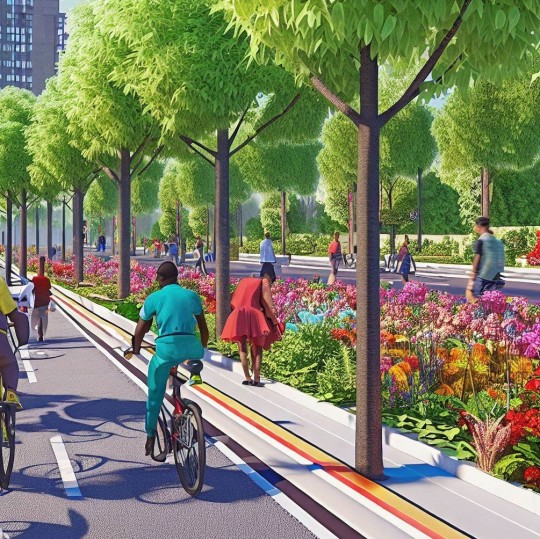
Come si può notare, gli alberi lungo le strade non sono solo un elemento decorativo, ma una vera e propria infrastruttura verde che migliora la qualità della vita urbana. Per questo motivo, è importante promuovere la piantumazione, la manutenzione e la protezione degli alberi nelle città, coinvolgendo le amministrazioni pubbliche, le imprese e i cittadini in una visione condivisa di sviluppo sostenibile.
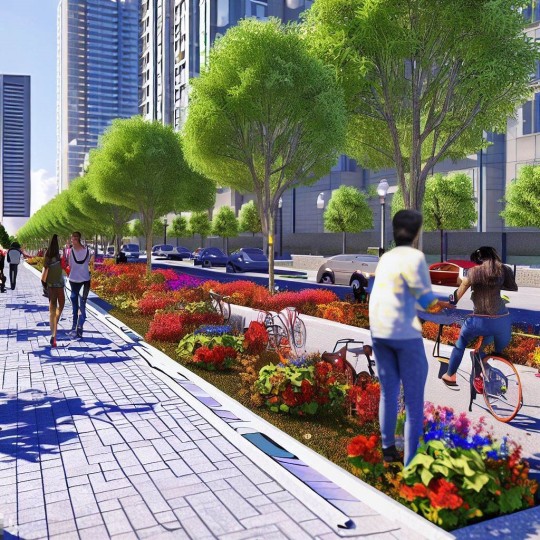
images created by The Board Behind © 2023
More related topics on this matter you might like:
Landscape Architecture: self-reflection on improving and enhancing our cities' run-down suburbs. English /Italian
Give color to the city to celebrate the joy of living.
I appreciate your kind presence and attention on this matter. Thank you for joining us today.
⏩ The Board Behind
#the board behind#sviluppo sostenibile#urban environments#urban tree heritage#ecological restoration#social growth#economic growth#city development#well being#urban living#urban life#heat wave#heat islands#sustainable progress#social innovation
15 notes
·
View notes
Text
Chicago Fights Back: New Tools to Combat the City's Changing Climate
Chicago fights back against climate change with new sensor technology, helping neighborhoods adapt to a changing urban environment. #climatechange #sustainability #Chicago
Photo by heather bozman on Pexels.com
Chicago is no stranger to the impacts of climate change, with extreme weather, flooding, and heat waves becoming increasingly common in the city. To combat these effects, a team of 17 organizations, led by the U.S. Department of Energy’s Argonne National Laboratory, has deployed a set of scientific instruments on the rooftop of Bernard J. Brommel Hall at…

View On WordPress
#Chicago#climate change#community research#extreme weather#minority-serving institutions#resilience#sensor technology#sustainability#urban environment
12 notes
·
View notes
Link
#nature#environment#cities#urban trees#urban design#environmentalism#climate change#trees#urbanism#sustainability
2 notes
·
View notes
Text
Learn About Invasive Grasses: National Forest Week Discussion
🌲✨ Exciting Announcement for National Forest Week 2024! ✨🌲
Join us from September 22-28 as we celebrate National Forest Week with a special theme: “Two-Eyed Seeing: Welcoming all knowledge to sustain our forests.” This year, we’re embracing diverse perspectives to ensure the health and vitality of our precious forests.
🌿 Flag Raising Ceremony: Sunday, September 22Kick off the week with a…

View On WordPress
#biodiversity#Canada#Community Engagement#community events#cultural diversity#ecosystem protection#environment#environmental awareness#environmental stewardship#Flag Raising Ceremony#Forest Education#Forest Health#forest lovers#Forest Sustainability#George Genereux Urban REgional Park#invasive grasses#National Forest Week#native ecosystems#Nature#nature conservation#Richard St. Barbe Baker AFforestation ARea#Saskatchewan#Saskatchewan Environmental Society#Saskatoon#Saskatoon Public Library#Two-Eyed Seeing
0 notes
Text
Plant the right trees in the right places.
When we plant the right trees in the right places, we support a cooler, greener and healthier future. Mitigating Climate Change and increasing biodiversity.

#Greencities#ClimateActionNow#sdg13#sustainable forest management#urban trees#urban environment#urban-rural linkages#green cities initiatives
0 notes
Text
Hotel toronto


#This hotel has set a precedent of what you can do in an urban setting—with sustainability rooted in every detail. As Canada’s first mission-#1 Hotel is dedicated to zero-waste and will be diverting over 85 percent of waste from landfills#Hotel has also partnered with GreenPlanet to convert 100 percent of kitchen oil and grease into biofuel.#To top it all off#the hotel’s design palette—interior and exterior—pays tribute to Toronto’s local environment and natural beauty through the use of hand-sel
1 note
·
View note
Text

Out on a bus trip into town to sort out a few random bits of business - not something we've done all that often of late as the car has proved more convenient for getting into Bristol city centre, which can mean quite the difference between a trip taking half a morning or afternoon or a full morning or afternoon. But I will admit I do rather appreciate being forced to slow down the pace of life.
After spending quite a bit of time of late working on developing my old blog with the addition of video and audio podcasting, it was nice to get out and just take a few snaps of the lovely autumn foliage, so more like shots incoming...
#sustainable living#Bristol#classic style#city life#transport planning#England#poppy appeal#lapel pin#classic menswear#lifestyle#urban environment#arcchitecture#Greek Revival#Church of St Mary on the Quay#Bristol Harbour#classic fashion#photography#update#Michael's Mission
0 notes
Text
Sometimes I just don't understand society or people.
I have a great love for nature and environmentalism. Lately a report raised concern of the local dog parks quality in the news.
"They are dark and dirty" said the reviewer. "And the dogs have little to no activities". And it's true! I don't use the parks that often, because my dog has nothing to do in them. No water faucet, dog bags or play structures. Some are dug up or overgrown. Fallen trees get left for days and the gate locks are broken. We usually train for a few minutes, and then he wants to leave.
I left a comment on a public news article lamenting that the parks have low standards, with feces and trash inside - and how installing a bag dispenser by the entry would minimize some of the feces issue. Some karen then decided to lambaste me for being irresponsible and pinning the litter blame on me, for even daring to suggest our public areas of use have these amenities. Because how dare I not pick up after myself with my own trash bags (I do, but that's beside the point).
In the early days of owning a dog I often forgot my waste bags, because the design of the cheapest option is clunky and require you to rip 2-3 bags off a roll and keep in your pocket (this is why we see the waste bag roll hangers for sale). Dog owners usually chuckle at this, "oops, I forgot the bags in my other coat pocket". Which is fine, until you come across the issue of letting your dog loose at the park and not picking up. A report recently highlighted that the cost of owning a dog has gone up, with a lot of the money being expenditure on bags (the economic recession Sweden is around 40%, but the reported % monthly is somewhere around 10%). You can then easily see how in an low income area, you cut corners to make ends meet, because let's be real, nobody will give up their family member unless it's dire.
Supposedly in Austria, dog parks are better. At least to whom I spoke to. Dogs get to have running water, there is a bag dispenser and clearly marked trashcans. As for the lighting, I can't say. But I imagine they have better visibility at night as well.
My area has neither. The nearest trashcan is 500m away from the dog park if you decide to take the stroll path to the main park. I've found, and fallen on discarded bags because of this. And I've reported these issues to city hall.
I just despise that every time in this town you raise concern for environmental issues some grimy shitter is putting you down for suggesting things could be better. Don't speak up, and don't even think you are better than anyone. This is the law of jante, it's such a shit concept.
Needles to say, I told her to take her attitude to the trash where it belongs. And of course to pick up after herself, while reporting any issues to the city hall like a normal adult would do.
#environment#doglife#doglover#dogblr#dog owner#doggo#shit people say#green infrastructure#sustainability#animal welfare#animal wellbeing#urban intervention#urban decay#urban development
0 notes
Text

Last weekend, we hosted our first ever Urban Ecology hike with an urban ecologist working in the City of LA.
We went on a nature hike along a river encased in concrete... which sounds crazy I know, but Kat Superfisky sees it all differently.
I think I was amazed constantly. 60+ people showed up. Everyone was engaged while learning about the human-nature relationship in Los Angeles. We saw perception expand to something beyond our human ecologies.
We made a whole video with Kat if you want to learn more - they work on LA River restoration and are an absolute gem 💎
-qbv
#queerbrownvegan#sustainability#climate change#environmentalism#social justice#environment#climate crisis#environmental justice#activism#intersectional environmentalism#los angeles#urban ecology#ecology
7 notes
·
View notes
Text
Resilient cities as a driving force of economic development and fighing inequalities - 2nd Azerbaijan National Urban Forum.

The 2nd Azerbaijan National Urban Forum is organized by the government of Azerbaijan in collaboration with UN-Habitat. It is preceding World Habitat Day. It will take place in the cities of Zangilan and Baku, from 29 September - 1 October 2023.
AZERBAIJAN NATIONAL URBAN FORUM.
Urban planning and city development play a crucial role in driving progress towards achieving sustainable development. Given the ongoing global urbanization trends, the significance of these development agenda items is further reinforced by specific challenges and opportunities faced by each country.
The Republic of Azerbaijan represents one of such countries. As it actively supports and promotes the localization of the 2030 Sustainable Development Agenda, Sustainable Development Goal (SDG) 11 is considered a vital component of the country's post-conflict socio-economic reintegration priorities. The New Urban Agenda, offering an action-oriented universal framework for sustainable housing, holds great value in this regard. Collaboration, experience-sharing, and learning from each other are essential for the success of national and sub-regional sustainable development efforts.
To highlight the importance of sustainable urbanization processes, the Government of the Republic of Azerbaijan, in collaboration with UN-Habitat, will organize the 2023 Urban Week. The Urban Week will commence with the 2nd Azerbaijan National Urban Forum (NUFA2) on 29 September 2023. NUFA2 will bring together a diverse range of urban stakeholders and participants, both from Azerbaijan and internationally, over three days. The forum will be held in the cities of Zangilan and Baku.
While NUFA2 aims to discuss emerging key urban challenges, ongoing projects and the vision for the urban future in the Republic of Azerbaijan, it will also show-case international experiences in the related field to stimulate local action. Given the global importance of post-conflict reconstruction and rehabilitation, NUFA2 will be focusing on the role of urban productivity and economic growth, hereby fully deploying the potential of the SDGs and the NUA for economic resilience and transition to a circular economy.
Urban week will continue with World Habitat Day, which will be held on October 2 in Baku.
The event will bring together a diverse range of national and international urban stakeholders. The forum will address key emerging urban challenges and showcase international experience focusing on the role of urban productivity and economic growth, hereby fully deploying the potential of the SDGs and the New Urban Agenda for economic resilience and transition to a more sustainable urban future.
#Resilient cities#economic development#social development#environmental development#urban development#urban environment#urban stakeholders#forum#urban productivity#un-habitat#Urban planning#City development#sustainable urban development#Azerbaijan
0 notes